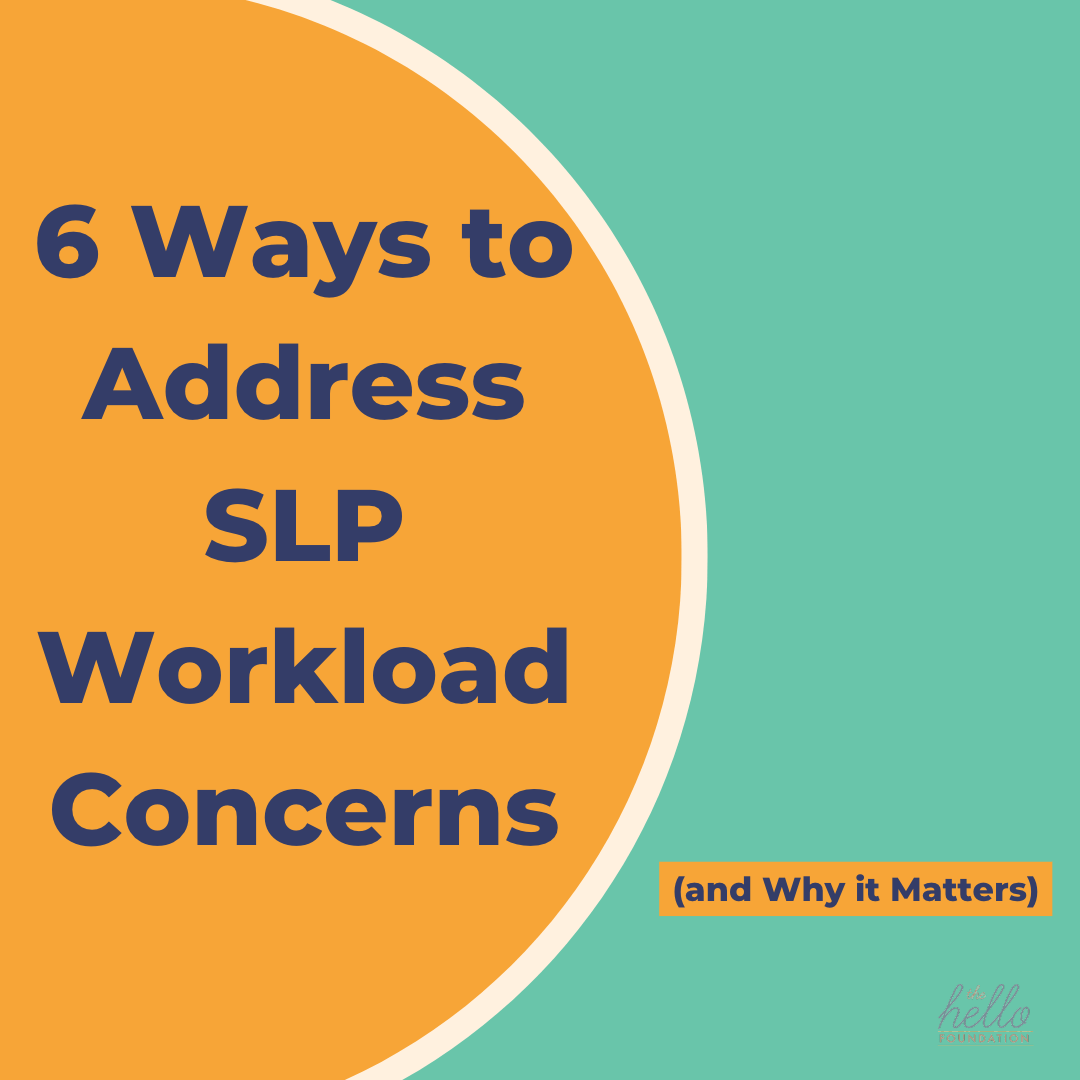Listening to SLP workload concerns is part and parcel of any special education administrator’s job description.
My caseload is too high.
I can’t meet my timeline on those evals.
There are more students in the referral queue than I can get to before the end of the year.
The students on my caseload have higher support needs, and I don’t have the time to help them.
Sound familiar? As sympathetic as you may be to their plight, constantly listening to these types of concerns and complaints can take a toll on your mental health as well. Reframing SLP workload concerns in the context of student growth is one way to keep yourself engaged and solutions-oriented.
Research indicates that caseload size negatively impacts student achievement. As caseloads increase, weekly service time and individual attention begin to wane. The result? Elongated program involvement – and subsequently decelerated student progress. So when your SLP comes to you with a workload concern, what they’re actually saying to you is that there are real consequences in play for students. Those consequences might look like . . .
- abandoning individual therapy and increasing the size of therapy groups.
- consultation and collaboration with gen ed teachers being cut from the schedule.
- service models being narrowed to address the lack of collaboration time, which results in more students being pulled out of the general education classroom (the only actual classroom in which we’ve been mandated to see student growth).
6 Ways To Address SLP Workload Concerns
Despite how hard SLPs work, if they are stretched too thin, it will inhibit students’ ability to make functional progress. With that in mind, here are six ways district administrators can realistically (and effectively) address workload concerns with their SLPs.
1. Create a district-wide environment of consistency
Often SLPs feel others have lighter caseloads and advocate for help with their own. And all too often, administrators respond by comparing the number of students between specialists. Of course, the number of students alone does not come close to capturing how an SLP will be spending their time in the building. Five students remediating /s/ & /z/ do not carry the same collaborative and time demands as working with five autistic students. A true environment of consistency is one based on overall expectations of work, so consider ideas like caseload weighting when looking at what your SLP team does every day.
2. Define SLP expectations
Many administrators have no expectations about how long it should take for kids to demonstrate functional growth and therefore have no way to monitor progress. Ensure all expectations are clearly defined for your SLP – including eligibility criteria, educational impact, service models, and considerations. Use a pre-determined outcomes framework, so you don’t have to start this work from scratch. If your SLP practices in the best interest of student progress, they will be happy to see this happen.
3. Encourage SLPs to Share specialized knowledge With others
Not all of your students’ speech therapy time has to be logged with an SLP. Paraprofessionals, classroom volunteers, other students, teachers, and parents can all be taught small structured pieces of therapy to help a student practice and generalize various skills.
4. Allow time for SLPs to collaborate
A student’s IEP might dictate 30 minutes of service, but that doesn’t account for time spent educating teachers on therapy techniques or collaborating with peers – both of which significantly impact program success. Eric Richards, Coordinator of Student Services in Salem-Keizer Public Schools in Oregon, committed 10% of a building’s SLP service time to non-IEP responsibilities. The goal was simple: SLPs were told to use the time to collaborate and influence student progress. Some taught sound productions in Kindergarten classes. Others spent time scaffolding the curriculum. Still others taught educators how to reinforce speech objectives in the classroom. These efforts resulted in quality referrals, eligibilities, and dismissal rates. Make sure your SLPs have time to devote to collaboration outside of their IEP responsibilities.
5. Be transparent and fair
Colleagues talk to one another about how things are going, which is doubly true when things aren’t going well. Rumors can start when one staff member hears that another got their caseload reduced while others didn’t or start to believe that you have favorites. Develop a shared understanding of what objective information will be most informative when evaluating workload and create a system that allows everyone to see that information. For example, if caseload numbers are part of that objective information, send your team a monthly report or maintain a shared spreadsheet. Check your bias and make sure you’re not accidentally giving anyone preferential treatment, and if changes are afoot, pull back the curtain and let people know your thought process. Above all else, make sure that every discussion is student-focused. Operating in the common interest of students allows professionals to look forward, focusing on positive change rather than assigning blame for inequitable workloads.
6. Bring in help
Large SLP workloads are often unavoidable. In these cases, don’t be afraid to seek out help – even if it’s for an abbreviated, immediate need. Bringing quality short-term SLPs on board can fortify collaborative efforts and help your team with time-intensive projects, including testing, screening, and teaching classroom strategies. Securing short-term SLP help can deliver important returns in the long run.
Little changes like those listed above can bring about big changes in your team culture. By providing your high-quality, student-focused employees with the listening ear and supplemental support they need, you’re empowering them to be successful and helping ensure the long-term progress of your students.
This post was originally published 8/26/14 and most recently updated 2/6/23






